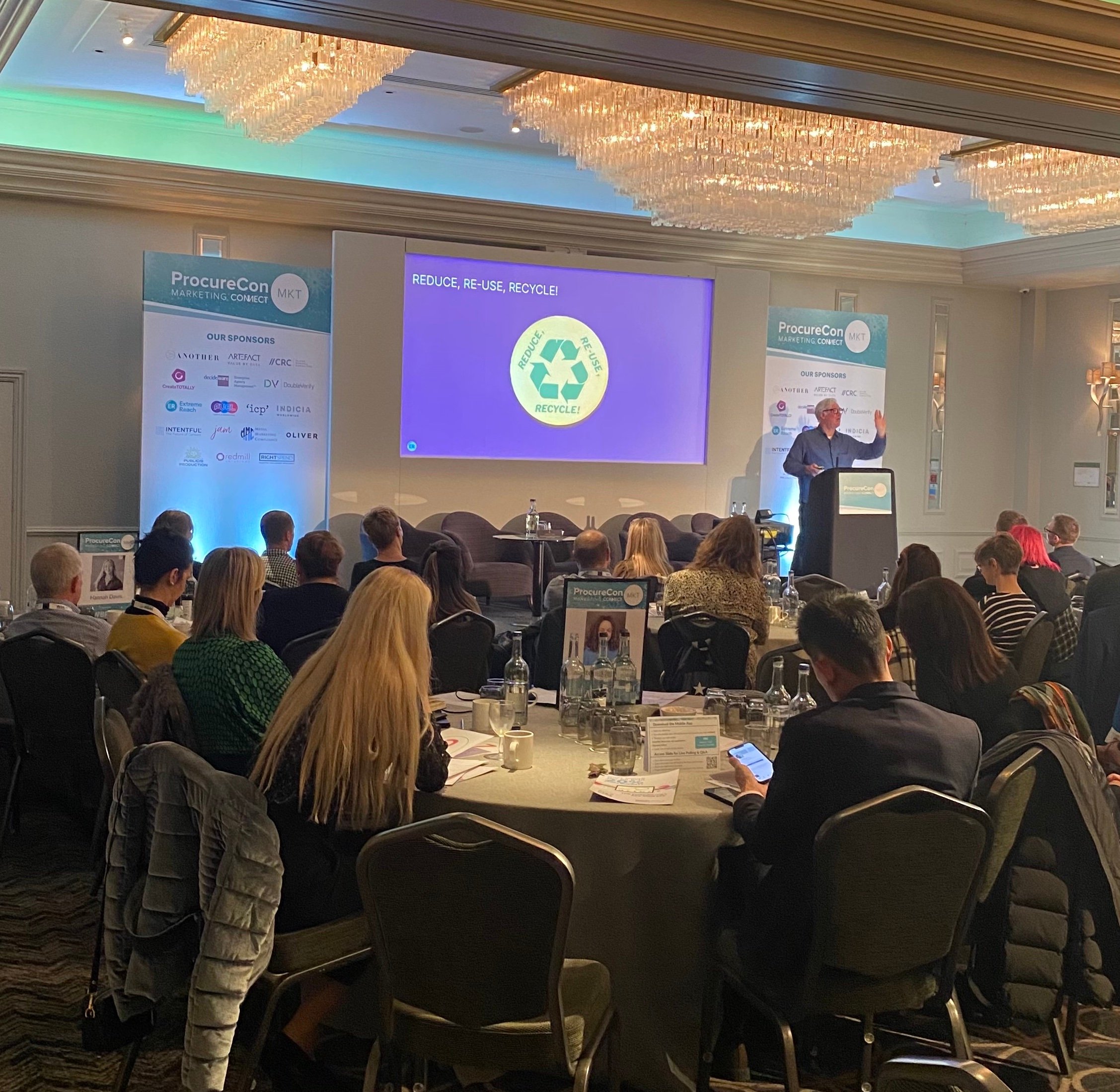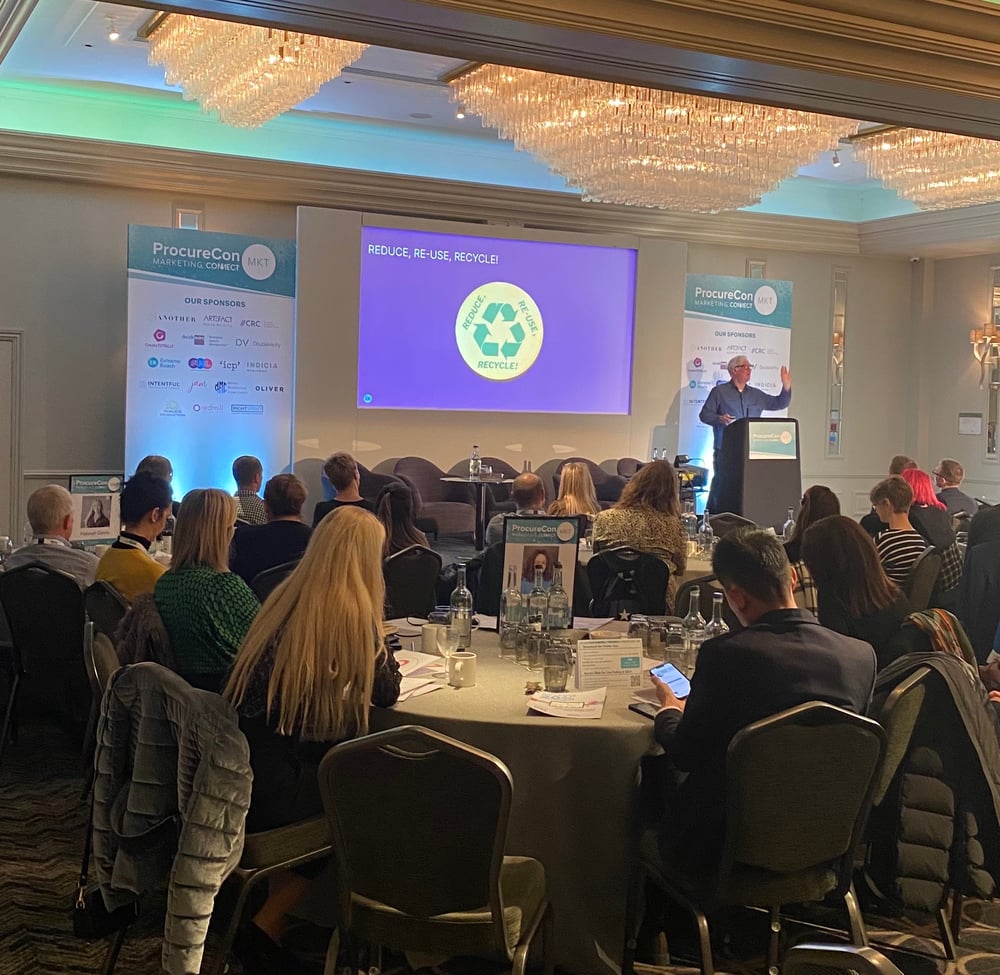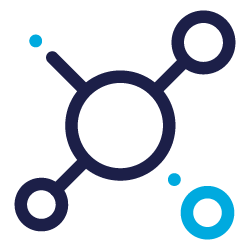

Sophia Thomas reflects on the recent ProcureCon conference in St Albans, UK, bringing together the marketing procurement community, and helping them build strong relationships with the suppliers of technology, services, creative production, and data products used by brands in all marketing sectors.
Following the opening address, this year’s event kicked off with a round of networking bingo; we were given 15 minutes to meet as many people as possible and discuss their motivations for attending. Across every conversation I had, one key driver kept emerging: inspiration. With much of our working lives shifting towards a hybrid model and more of our interactions occurring virtually, in-person events like ProcureCon are becoming an even more powerful way to engage and inspire. This isn’t lost on attendees, who are increasingly seeking out opportunities to break away from the nearly constant day-to-day of sitting on a screen, to have the chance to network and learn in person. These in-person events not only allow for authentic engagements, but also the chance for spontaneity – be it the unplanned connection while making a cup of tea or an invigorating, thought-provoking discussion during a working session.
Across the two days, there were numerous presentations and panels from both the procurement community and suppliers. A range of powerful topics and themes were discussed on stage and in our one-one conversations, but two in particular resonated with me: sustainability and a new-found appreciation for the power and potential of marketing operations.
Sustainability: the focus on sustainability is increasingly moving to the top of the agenda for many companies, but until recently the focus was primarily on direct costs. Now we are starting to see this shift to indirect costs like marketing, where the launch of associations like Adgreen are working to “eliminate the negative environmental impacts of production and enable the community to measure and understand waste and carbon impacts, empowering them to act for zero waste / zero carbon.” As the focus shifts to reducing the carbon footprint of asset creation, this highlights the need to reduce overall asset wastage. Instead of simply perpetuating the traditional model by thinking how do we make it more environmentally friendly, brands need to consider and interrogate their creative briefs from the start. Instead of creating a new asset – can the need be met by reusing, repurposing, or adapting existing content? Brands need to shift away from the mentality of always starting fresh, to also considering how inspiration can be drawn from existing content to create engaging, powerful assets that deliver against their channel and consumer needs.
Marketing Operations: the interest and desire to help marketing colleagues develop new models to meet the volume and speed for content was clear. Unfortunately, the demand for content is increasing exponentially, but the investment remains the same year on year. The procurement community increasingly recognises that the traditional model can no longer deliver by simply pedaling faster. Instead, the cycle needs to be broken and a new model considered. Across the two days, we heard many speak to how they’ve worked to establish a centralised model that aims to have the right balance between global and local to drive consistency and streamline costs, but also ensure the right level of flexibility for local nuance is maintained. Core to this ambition, is establishing a single source of truth for marketing content. Not only does this allow for better organisation and sharing of assets, but it can also enable improved workflows and management of the content briefing process, along with the collection of detailed data and insights to track return on investment and asset success.
The biggest takeaway for us, is each year we see the complementary nature of procurement and marketing functions go from strength to strength. So much of the collaboration of these two departments came through in the discussions and best practices shared. We were inspired by the procurement community’s desire to be facilitators of change – driven by their innate curiosity to build new internal operating models that will enable marketing to focus on their passion for creativity while also positively impacting the bottom line.
We loved being a part of this discussion, helping to inspire clients to achieve the best possible marketing outcomes across content operations. We look forward to continuing the conversation and helping our clients shift the content operations needle from good to great.
Sophia Thomas, Client Development Lead - EMEA

.png?length=800&name=Untitled-4-CrOps%20Maturity%20Assessment%20landing%20page%20graphic%20(1).png)


%E2%80%8B-%E2%80%8B%20%E2%80%8B.png?length=256&name=Purple%20B__Align%20(Content%20Alignment)%E2%80%8B-%E2%80%8B%20%E2%80%8B.png)
%E2%80%8B-%E2%80%8B%20%E2%80%8B-1.png?length=256&name=__Align%20(Content%20Alignment)%E2%80%8B-%E2%80%8B%20%E2%80%8B-1.png)
%E2%80%8B%20%E2%80%8B.png?length=256&name=Blue%20B__Implement-%20(Technology%20Implementation)%E2%80%8B%20%E2%80%8B.png)
%E2%80%8B%20%E2%80%8B.png?length=256&name=__Implement-%20(Technology%20Implementation)%E2%80%8B%20%E2%80%8B.png)
%E2%80%8B.png?length=256&name=Blue%20B__Adopt-%20(Technology%20Adoption)%E2%80%8B.png)
%E2%80%8B.png?length=256&name=__Adopt-%20(Technology%20Adoption)%E2%80%8B.png)





%E2%80%8B-%E2%80%8B%20%E2%80%8B.png?length=256&name=__Align%20(Content%20Alignment)%E2%80%8B-%E2%80%8B%20%E2%80%8B.png)





%E2%80%8B-%E2%80%8B%20%E2%80%8B.png?length=256&name=Blue%20B__Align%20(Content%20Alignment)%E2%80%8B-%E2%80%8B%20%E2%80%8B.png)
%E2%80%8B%20%E2%80%8B.png?length=256&name=Cyan%20B__Implement-%20(Technology%20Implementation)%E2%80%8B%20%E2%80%8B.png)
.png?length=256&name=Blue%20B__Activate%20(Content%20Activation).png)
.png?length=256&name=__Activate%20(Content%20Activation).png)

.png?length=256&name=Data_%20Outcome_White%20BG%20(1).png)









